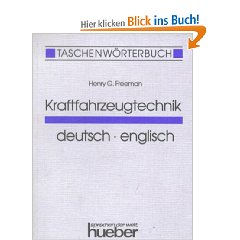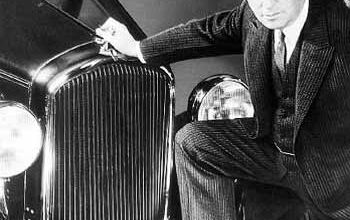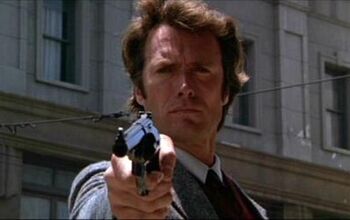1 View
Daily Podcast: It's All German To Me
by
Edward Niedermeyer
(IC: employee)
Published: June 19th, 2009
Share
GM Prius, Buick woes, car personality and the Task Force on Auto Advertising all get what’s coming to them on the continually-improving TTAC daily podcast. Meanwhile, we’ve got to give away a copy of the Taschenwörterbuch der Kraftfahrzeugtechnik (German-English technical dictionary), so give us your favorite German automotive phrase in the comments section. We’ll pick our favorite, and the lucky winner will be able to impress their local Porsche club with their new-found understanding of compound, car-related words.
Edward Niedermeyer
More by Edward Niedermeyer
Published June 19th, 2009 1:41 PM


































Comments
Join the conversation
verdichterrad: turbocharger compressor wheel. Think about it next time you're driving your Audi A6.
Threeer wins this one hands down!
@Matt So my 17 years growing up in Germany have finally paid off (I mean, other than my love of all things German food and a good Bischoffs every now and then when I can get my hands on one??)...ausgezeichnet!
Anything related to the East German *car* (I use this term loosely) Trabant, has to be on this list. Here's the link to an authentic GDR Trabant 601 commercial: http://www.youtube.com/watch?v=6LlVdmtYOBg "Four trumps with the Trabant 601. (The four Jacks of the French deck of 32 cards represent the four highest trump in the German card game Skat) 1.) Comfortable for four adults! 2.) Plenty of space for their luggage! 3.) Agile! Fast! 4.) It's got stamina and is robust! Your dependable companion, the new Trabant 601." The box-like Trabant car was a potent symbol of East German values. Hallmarks of the Trabant were: a fibreglass body and a two-cylinder, two-stroke engine. It provided cheap, basic family transport, powered by a small engine. The P50 was initiated in 1957, building on the AWZ P70 idea, and was the first car to carry the Trabant name. The meaning of the word ‘Trabant’ included notions of ‘servant’ or ‘comrade’, ideas which were literally realized in the archetypal P601 launched in 1964. The latter was the model that became famous, remaining in production for almost 30 years with comparatively few modifications. Its fibreglass bodywork had a simple box-like appearance, a visual metaphor for the basic technology that underpinned it. More powerful than its P50 predecessor it was available in saloon and cabriolet versions as well as a Kombi station wagon. A jeep-like model, the 'Kuebelwagen', was developed for the army and another version, the Tramp, for civilian use. As was the case in other industrial contexts in the Eastern bloc, designers at the AWZ factory had many ideas for other models that were never realized for economic reasons. These included a prototype for an updated ‘people's car’, the Trabant 603 with a Wankel engine; further unrealized attempts to update the Trabant took place in 1979 and 1982 with the P610 powered by an 1100 cc engine. However, following the fall of the Berlin Wall the place of the previously ubiquitous, yet basic Trabant, a powerful icon of the former East Germany, was challenged by the widespread availability and attraction of cheap, but style-conscious and symbolically ‘democratic’, second-hand Western alternatives such as the Volkswagen Golf. The competitive nature of the market place rang the death knell for the Trabant, leading to the closure of the Zwickau factory for car production.